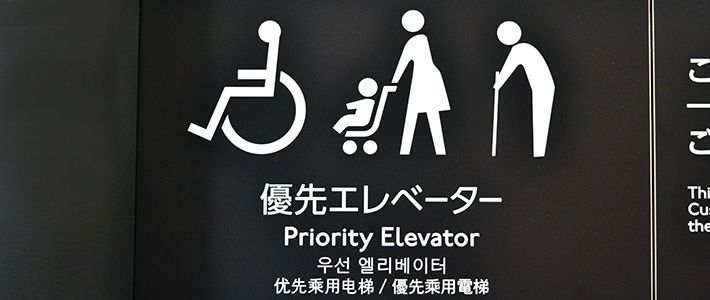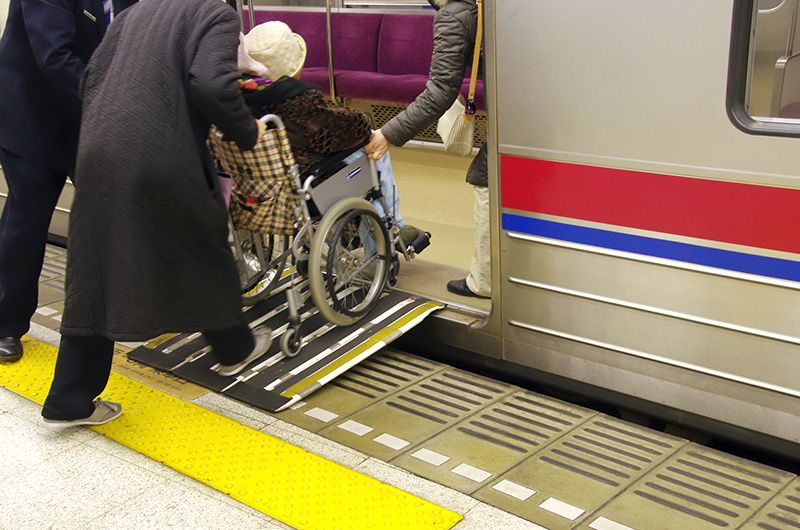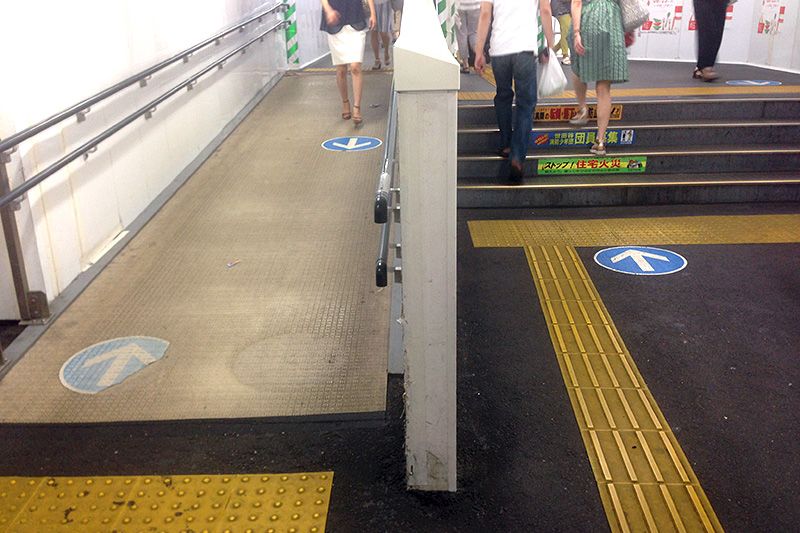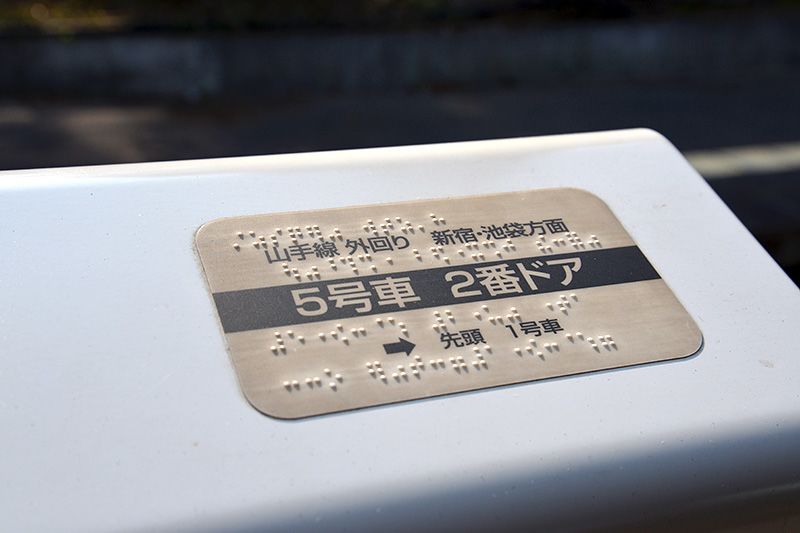
Barrier-Free Design in Japan
Society Culture- English
- 日本語
- 简体字
- 繁體字
- Français
- Español
- العربية
- Русский
Doing Away with Barriers
Ahead of the 2020 Tokyo Olympics and Paralympics Games, efforts are underway to increase the accessibility of Japan’s highly developed public transportation network so that all passengers can use it with ease. In Japan, one of the world’s fastest-aging countries, the needs of the elderly and people with disabilities have become key issues in creating a barrier-free society.
In 2006 Japan passed the Barrier-Free Act, a law promoting easier movement for the elderly and disabled. It standardized measures for developing barrier-free environments at public transportation hubs including train stations, airports, and passenger ship terminals, shopping centers, public buildings, and public spaces including roads, parks, and outdoor parking facilities.
In addition to the development of physical infrastructure, the bill also promotes greater awareness and understanding of the needs of elderly and disabled people and encourages broader interaction and support from others in society.
 Portable ramps improve wheelchair access on trains by bridging gaps and height differences between carriages and platforms.
Portable ramps improve wheelchair access on trains by bridging gaps and height differences between carriages and platforms.
Feeling the Road
One of the most prominent examples of barrier-free design in Japan is tactile paving. Known in as tenji burokku, this is used widely used in public areas to assist the blind and visually impaired navigate more safely. The raised tiles, with straight ridges indicating a path forward and bumps warning of an obstacle of some kind, were the idea of Japanese inventor Miyake Seiichi, who spent his own money to create the paving to help a friend who had gone blind. First used in 1967 in Okayama Prefecture, tactile paving has since spread beyond Japan’s borders, taking new shape in countries where it is adopted.
 Tactile paving at a train station in Japan.
Tactile paving at a train station in Japan.
Boosting Public Transportation Access
The accessibility of public transportation facilities in Japan has continued to improve, thanks to the installation of ramps and elevators, tactile paving along walkways and on platforms, and disabled-accessible toilets. Service operators are increasingly providing ticketing, scheduling, and other information in braille and designating spaces on trains and buses for wheelchair use. Companies have also trained their employees to provide better assistance to those who need it.
 A plate on a platform door provides information in braille.
A plate on a platform door provides information in braille.
 Passengers use an elevator on a train platform.
Passengers use an elevator on a train platform.
According to data from 2014 for facilities seeing over 3,000 passengers daily, 85% of airports, 88% of passenger ship terminals, 82% of bus terminals, and 83% of train stations have improved access by installing ramps and elevators. When all of Japan’s roughly 9,500 train stations are included, however, the rate falls to 43%, highlighting the difficulties many elderly, disabled, and other passengers face when traveling by rail.
Disabled-accessible toilets are available at 100% of airports, 80% of train stations, 71% of passenger ship terminals, and 63% of bus terminals.
Train stations employees frequently use portable ramps to help passengers in wheelchairs smoothly board or alight from carriages. Recently, so-called non-step buses, whose entrance and floor is less than 30 centimeters from the ground, have gone into service in Osaka, Tokyo, and other cities. Currently there are four companies boasting fleets of non-step buses, pointing to a gradual shift toward these easily boarded low-riders.
Toward a Barrier-Free Society
While Japan is considered a leader in barrier-free design in Asia, it still lags behind many countries in the West. While legislation is bringing about progress, a significant number of older public facilities and small retailers have yet to implement barrier-free measures due to the costs involved, space requirements, and other issues.
The 2020 Tokyo Games are raising public awareness about the need for an inclusive society. The measures authorities are putting in place in the run-up to the Olympics and Paralympics are expected to continue pay dividends for the country far into the future.
▼Further reading
 Feeling Japan: A Blind Sudanese Man Shares His Experiences Feeling Japan: A Blind Sudanese Man Shares His Experiences |  Employment Diversity at Nihon Rikagaku Industry Employment Diversity at Nihon Rikagaku Industry |  The Long Road to Disability Rights in Japan The Long Road to Disability Rights in Japan |